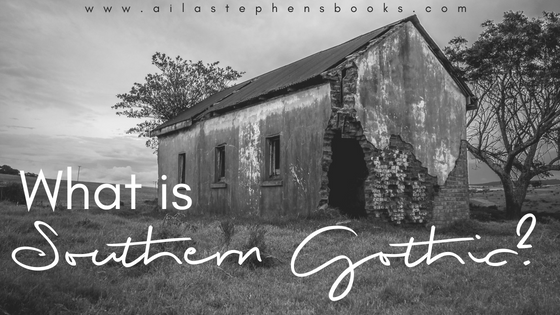
Happy Thursday, ya’ll!
So, if you follow me on Twitter, you might have seen this tweet:
Brief convo about #AlabamaRain today:
Person: So, is it any good?
Me: Well, I haven’t had anyone say otherwise. I love it. So, yeah.
Person: Is it Sci-Fi?
Me: No.
Person: Fantasy?
Me: No. It’s #WomensFiction meets #SouthernGothic.
Person: But you’re not a goth.
Me: *Blinks* Yep— Aila Stephens 📚 (@AilaStephens) August 8, 2018
Which has inspired this blog post.
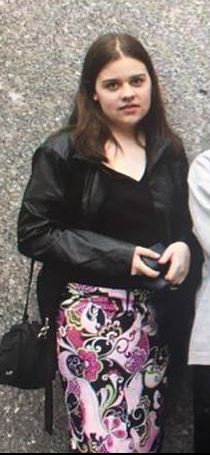
All I used to write then was horrible, angsty teenage poetry.
While I wasn’t a goth in high school, I did hang out with them. OH! WAIT! It’s Thursday. I can do the whole #ThrowbackThursday thing. Here’s a young Aila just standing around outside in NYC, I believe in front of The Empire State Building. Could be somewhere on Wallstreet, too, though. Not entirely sure. It’s been…a while.
Seventeen years, in fact. That was in March of 2001. Before the landscape changed.
I miss that skirt.
And GOOD GOLLY that’s a camera bag with a 35mm camera inside because cell phones, man, even though I think some of them had cameras on them, you couldn’t make out anything in the pictures.
The times sure have changed. I sound old.
Anyway! Let’s carry on so I don’t wind up reminiscing about the good old days for this entire post, because I have to start writing about the bad old days.
Huh? Okay, follow me.
Gothic History
According to Wikipedia, Gothic literature is comprised of fiction, horror, death, and occasionally romance. Its inception is largely credited to a man by the name of Horace Walpole and his 1764 novel titled The Castle of Otranto.
The Wikipedia article goes on to state that the type of terror presented in Gothic fiction is pleasing.
Other pioneers in this genre during the 18th century are: Clara Reeve, Ann Radcliffe, Matthew Lewis.
But, perhaps the most well-known Gothic writers were those in the 19th century: Mary Shelley (Frankenstein, anyone?) Edgar Allan Poe (doth quoth the raven) and Charles Dickens—yes, that’s right. The Christmas Carol is a work of Gothic literature.
Where does the term Gothic come from? Architecture.
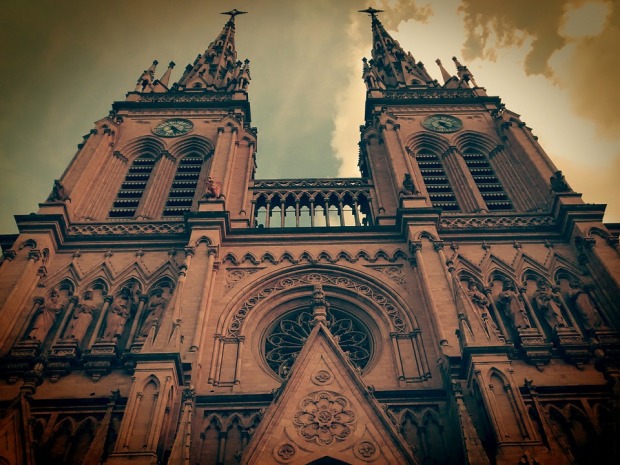
There’s something about the way Gothic architecture makes you feel, isn’t there? It’s intimidating and spooky, yet whimsical and—something else I can’t quite put my finger on. These are the buildings you tend to stare at for a few moments longer than any other. They stand out among all other types of architecture. Gothic is, arguably, the most recognizable form of architecture. Who among us doesn’t remember watching Sigourney Weaver on top of the very Gothic building in Ghostbusters?
Romance and Macabre
During the Romantic period is when Gothic literature really, for lack of a better term, took off. Mary Shelley’s Frankenstein is probably one of the most well-known pieces of Gothic literature in existence.
A lot of literary styles stemmed from what was happening with Gothic literature in this period. Heck, we wouldn’t have the Twilight Saga (not commenting on whether that would be a good thing) if it weren’t for the work of these Gothic authors. Vampire fiction really skyrocketed during this time and became its own thing after the Gothic novel by Polidori called The Vampyre (1819).
And Frankenstein itself, thanks to Mary Shelley, started one of the most well-known genres to date: Science Fiction.
This was an extremely important time in literature.
Victorian-era Gothic
So many notable Gothic lit writers in this era. Sir Arthur Conan Doyle. Bram Stoker. Oscar Wilde. Nathaniel Hawthorn. Poe.
I’ll get to Edgar Allan Poe in a second.
I’m going to guess that most people have at least heard of a television show called Penny Dreadful. Maybe you haven’t watched it. Maybe you have and couldn’t stomach it. But, Penny Dreadful was born in the Victorian-era of gothic literature. (Not the television show, of course.) You can think of it as dark, eerie, often grotesque comic books sold for, you guessed it, a penny. Polite society didn’t care much for these works and coined them Penny Dreadfuls. Now, onto Poe.
Who didn’t read Poe in high school? He was required reading in my school, and from what I remember, kids either loved him or hated him. There weren’t many eh, he’s all right reactions.
And it wasn’t very different when Poe was around.
[Fun fact: The Baltimore Ravens is named as such because of Edgar Allan Poe.]
I don’t need to tell you that Edgar is known for dark works, this is common knowledge. But, his work further transformed Gothic literature, incorporating even more Byronic Romanticism, which is also seen in the Brontë sisters’ work.
And then there’s this guy named Charles Dickens.
While his work was heavily influenced by his Gothic predecessors, he began to modernize it and shape it into something of his own. In fact, Dickensian literature is its own thing. That’s another post for another day. Maybe.
The point is, during the Victorian-era, people couldn’t get enough of Gothic lit. They often held big events with elaborate sets to reenact the stories. I didn’t think much of this until I watched a show on Netflix called The Paradise. Now, The Paradise itself is not a Gothic show, but it is a British show set in the Victorian-era (and sadly only lasted two seasons… I’m sorry. Series.) and in the second series, everyone is besotted by this very Gothic serial. The show really does a fine job of depicting how people reacted to this type of tale—complete with transforming an entire department store into the scenes of the serial.
Gothic Devices
I’m not talking about weaponry here.
Gothic literature, as many types of literature, was (and is) meant to shine a light on social and/or political issues. (The mid-1700s were a tumultuous time in England and Europe on the whole.)
There’s always a sense of fear. Of the unknown. Of mystery. Certainly there’s always death.
Other devices include, but are so not limited to:
Imprisonment or isolation. Think about it. What is the true punishment of putting a prisoner in isolation? I know I’ve heard people joke around before and say they’d love a few days in an isolation chamber…but what happens when a few days turns into a few months? A few years? You’d go mad. Isolation—true isolation—and the insanity that stems from it is a common theme in Gothic lit. And we’re not just talking about someone being sent to prison. Imprisonment might be shown inside a castle where the inhabitants aren’t allowed to leave. Or, it might be an illness which has trapped someone inside their own mind, or any number of horrible things.
Supernatural. Ghosts are common. Whether actually present in the story, or just another symptom of a character’s madness. But supernatural elements didn’t just mean ghosts and goblins. It also flirted with spirituality and the bold reinterpretation of God and demons.
Omens. Dreams are often written in great detail and nowhere else can stranger things happen than in one’s dreams. Gothic dreams are often riddled with omens and things for the reader to interpret right alongside the dreamer.
One of the most interesting devices I came across (Virtual Salt) is Onomatopoeia. This is when you read a word aloud and it sort of sounds like the thing it describes.
Buzz.
Howl.
Whoosh.
Moan.
Chirp.
Clink.
Squish.
By the use of this type of word/sound connection, authors found another way to immerse their readers into these dark tales.
20th Century Gothic in America
We’re getting closer to Southern Gothic, I promise.
The late 1800s, early 1900s, is when Gothic literature really began to infiltrate America. Magazines were reprinting Victorian-era, and earlier, Gothic tales, and the work from a writer by the name of H.P. Lovecraft was showing up on shelves. You might have heard of him. (If you haven’t…well, I can’t help you.)
When Gothic lit made the journey across the sea, American writers began shaping it for their American audiences. According to this Wikipedia article, American Gothic lit took on the topics of rational vs. irrational, puritanism, ghosts, and monsters…but also domestic abjection. Think of your sideshow freaks. That is a grand example of domestic abjection. People cast off from society because they’re different from everyone else.
Hell played a major role in this Gothic transformation. Literal Hell. Americans, especially during this time, were staunchly religious on the whole, and this idea of Hell was perhaps the scariest thing an American could conceive. This article goes on to state the imagery of Hell was commonly coupled with the notion of predestination, original sin, and reinforced by good ol’ guilt and shame.
Which brings us to the point of today’s post.
Southern Gothic Literature
And we’ve arrived.
We’ve also arrived at another Wikipedia article. (Boy I’ve had a lot of references for this post.)
This particular article beautifully sums up the emergence of Southern Gothic lit:
The genre came together, however, only in the 20th century, when dark romanticism, Southern humor, and the new literary naturalism merged into a new and powerful form of social critique. The thematic material was largely a result of the culture existing in the South following the collapse of the Confederacy. It left a vacuum in both values and religion that became filled with poverty due to defeat in the Civil War and reconstruction, racism, excessive violence, and hundreds of different denominations resulting from the theological divide that separated the country over the issue of slavery.
Southern Gothic literature is obviously going to be set in the South. It is often times violent, the characters are wonderfully Southern and eccentric, there can be references to supernatural elements—sometimes by way of hoodoo. Not only is gender challenged, but often times race and religion, as well.
One of my favorite things I have read in reference to Southern Gothic literature, and I can’t remember where I read it, but that occasionally God and The Devil are standing in a river holding hands.
Southern Gothic is not for the weak-stomached. It is gritty and often uncomfortable. In fact, it is also sometimes called Grit Lit, or Southern Noir. As the quote from above states, it deals with the abhorrent issues in the South in the antebellum days.
The article above goes on to state that Southern Gothic literature, while it does use classic Gothic devices, it doesn’t do so solely for the sake of suspense so much as it does to explore and examine the values (or lack thereof) of the American South.
For quite some time, the majority of the world has had a fascination with the Southern states. Some of it stems from the atrocities committed here, some of it stems from the folklore, the larger-than-life-tales that bubbled up from our swamps, or came down from our rolling hills, some from the plucked strings of the banjo or mandolin…but a lot of it can be contributed to the Southern Gothic stories written by William Faulkner, Anne Rice, Harper Lee, Tennessee Williams, Flannery O’Connor, and Eudora Welty—though she hated the genre for what she believed was aimless violence and asked not to be grouped into it. Oops.
Alabama Rain
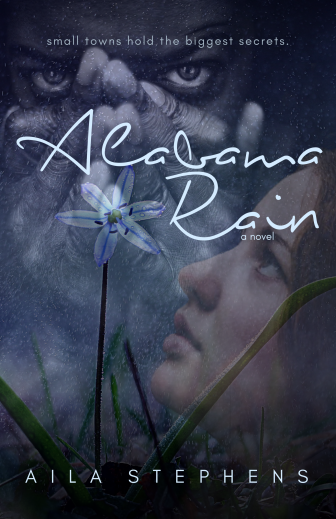
Pre-Order available for paperback, Nook, and Kindle—iBooks coming soon!
So, of course I’m going to tie all of this into my newest book, Alabama Rain. (That link will take you to Barnes and Nobel where you can read the first three chapters for free and most of chapter four, as well!)
Part of Alabama Rain is set in 1994, but the majority of the book focuses on the journey of a group of my characters (Corrie, Mabel, Nelly, and Clarence) during the Great Depression—a particularly horrible time for the South. Poverty, like elsewhere, was rampant. People resorted to theft, violence, and any number of things just to quiet their starving bellies.
The surprising thing I discovered while researching and writing this book is that a lot of the issues from then are still issues today, even if they look different on the surface.
So far, the response from my eARC readers has been phenomenal. From messaging me their gut reactions, to Joshua Edward Smith’s review that put me in tears. To the the amazing review I just found from Amy Thomas while linking to Joshua’s review. Oh, the feels!
Thank you to all who volunteered to be eARC reviewers. I am delighted to know my cast of characters resonates with you. This story has been a big part of my life for two years now, and I am equally excited and nervous to release it into the world.
A couple of neat facts:
There’s a poem in the very beginning of the book, that is a nod to my grandmother who was an amazing poet. When I wrote it, I tried very hard to write something she would have been proud of. (Unlike the stuff I wrote when I was wearing that skirt…though she never actually read any of that. For good reason.)
I also have a nod to Gothic Literature’s earlier days, paying homage to what essentially birthed Southern Gothic, by referencing The Bride of Frankenstein.
That’s really all I have for you today. I hope you enjoyed this literature history lesson, and if you’re interested in pre-ordering Alabama Rain, it will be released this Tuesday: August 14th, so your wait won’t be long.
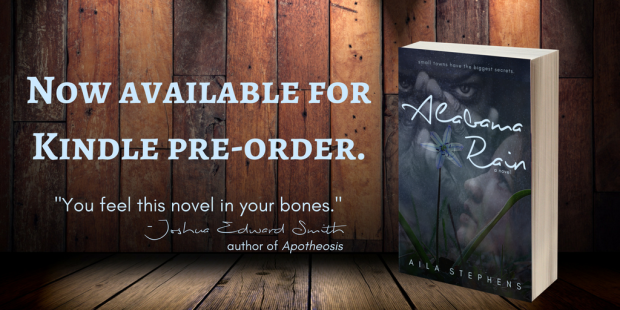
Thanks for that very informative crash course in Gothic/southern Gothic lit. I actually taught some straight-up Gothic lit to my students for a few years, but I knew next to nothing about its Southern counterpart. Apparently it’s a sub-genre I’ve been missing out on, as I love me some bad omens, insanity, melancholy, and otherwise. Also, expect to see my review of “Alabama Rain” within the week 🙂
LikeLiked by 1 person
It is an interesting sub-genre isn’t it? I could probably write a few more posts diving in further—and who knows, maybe I will someday. In the interim, I’d love to learn from you about Gothic Lit!
I am excited to see your review! I’d be lying if I didn’t add that I’m nervous as well, but mostly I’m thrilled! Thank you again for your interest in it. ♥
LikeLiked by 1 person
Thanks for the reblog! ♥♥♥
LikeLike
Southern Gothic is my favorite (sub)genre. There’s always so much mess and history behind every story that adds depth. A lot to sink your teeth into.
LikeLiked by 1 person
It is multilayered! What are some of your favorite SG titles?
LikeLike
Flannery O’Conner’s stories, Faulkner, oh, and Midnight in the Garden of Good and Evil. Movies too, like The Skeleton Key amd Beautiful Creatures. I feel like I am forgetting something major that I’ve read but these are what come to mind.
LikeLike